Mediterranean Cuisine
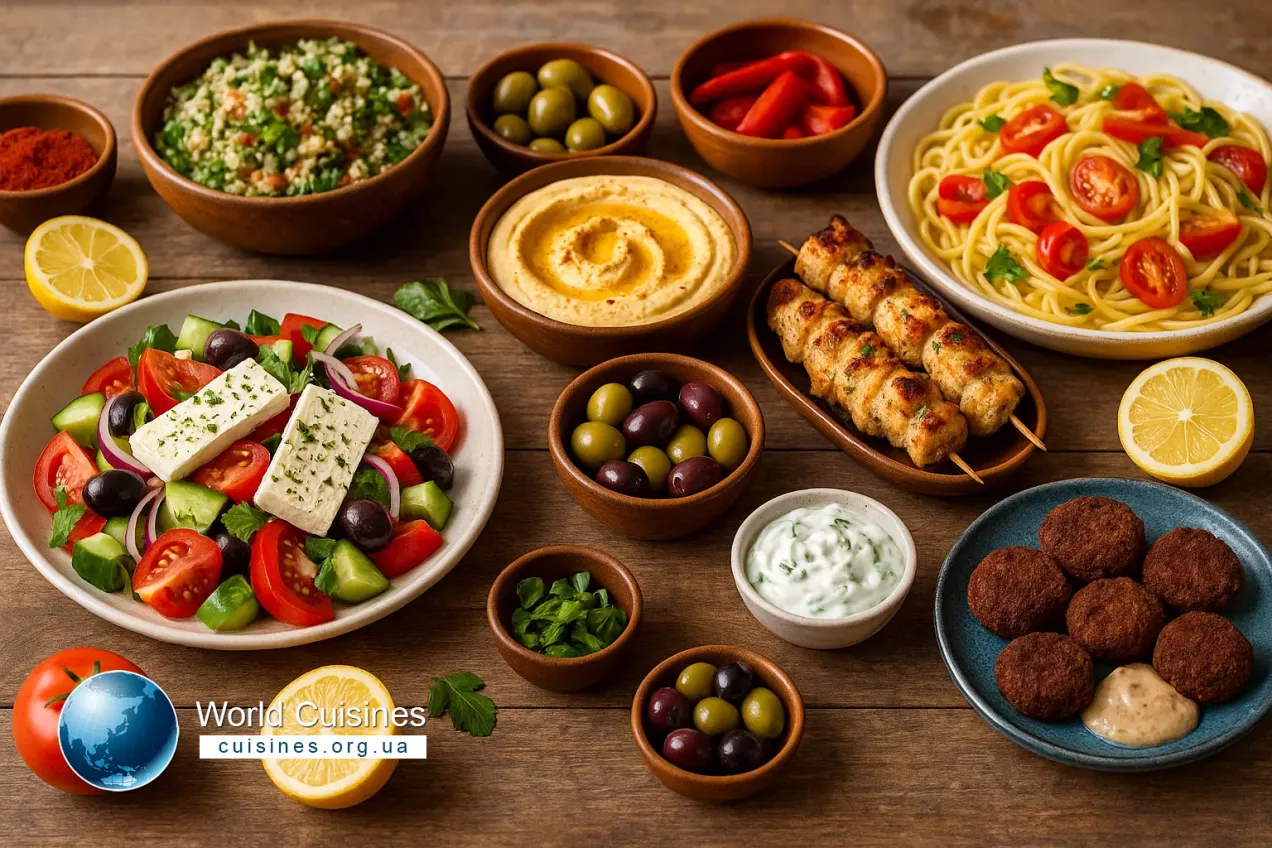
Mediterranean cuisine refers to the diverse culinary practices of countries surrounding the Mediterranean Sea, including regions of Southern Europe, North Africa, and the Middle East. Though not a single national cuisine, it forms a coherent culinary identity based on shared ingredients, climate, and traditions. Olive oil, fresh herbs, vegetables, grains, legumes, and seafood define the foundation of this cuisine, often complemented by wine, cheese, and seasonal fruits. This culinary tradition developed over thousands of years through trade, conquest, migration, and cultural exchange. It reflects the agricultural rhythms and social customs of coastal societies, where communal meals, outdoor markets, and locally sourced produce remain central. From the vineyards of southern France to the olive groves of Greece and the spice-laden kitchens of Morocco, Mediterranean cooking offers a spectrum of flavors bound together by simplicity and freshness. Frequently associated with health and longevity, Mediterranean cuisine is more than a way of eating – it is a lifestyle that emphasizes moderation, variety, and connection to nature. Whether enjoyed as a leisurely family meal or adapted into fine dining, it celebrates ingredients in their most natural and delicious forms.
Overview of Mediterranean Cuisine
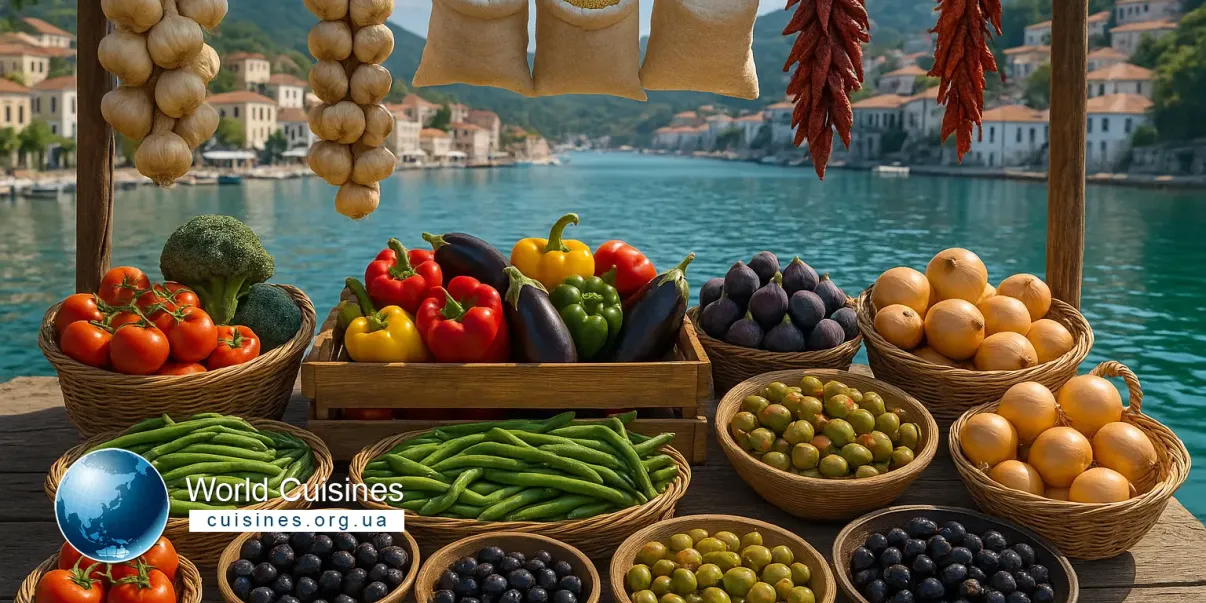
Fresh produce from coastal markets showcasing the rich biodiversity of the Mediterranean region.
The Mediterranean basin includes a wide arc of countries, each with distinct languages, cultures, and food traditions. Yet the cuisines of Italy, Spain, Greece, Turkey, Lebanon, Tunisia, and others share a Mediterranean spirit – one shaped by sun, sea, and centuries of exchange. The cuisine draws heavily from ancient agricultural systems based on wheat, grapes, and olives – the so-called "Mediterranean triad." Local customs evolved around harvesting seasons, fishing patterns, and communal baking. In every region, food is more than sustenance: it accompanies religious rituals, celebrations, and daily gatherings. Despite geographical diversity, Mediterranean cuisine is united by its celebration of simplicity, seasonal cooking, and the joy of eating together.
Main Features and Ingredients
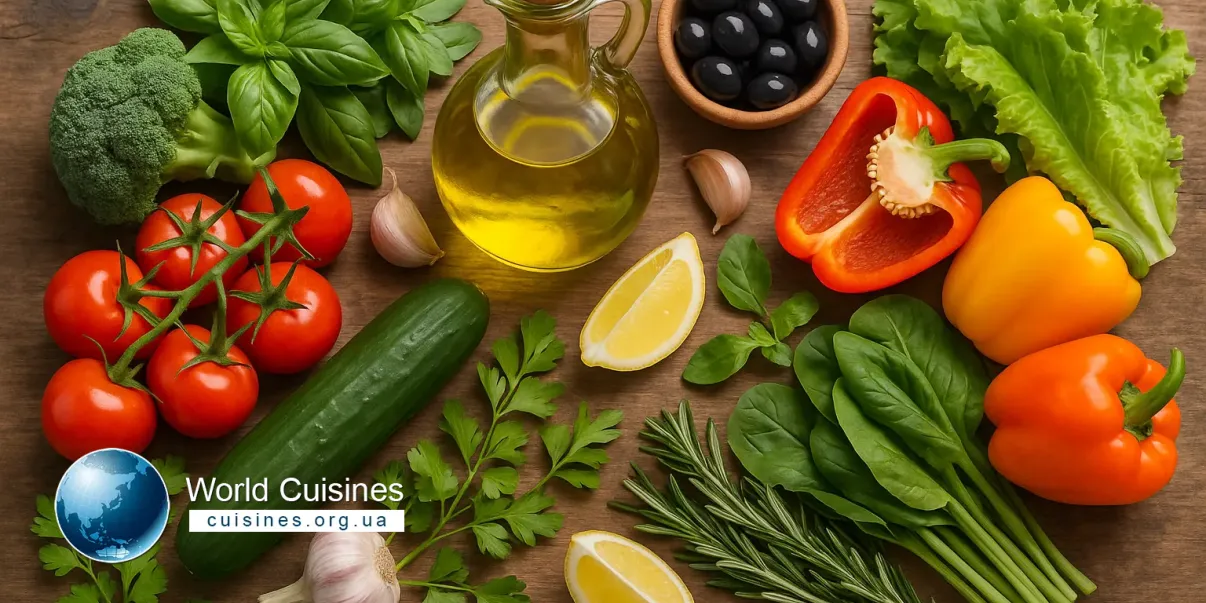
Olive oil, herbs, and vibrant vegetables form the heart of Mediterranean cooking.
At its core, Mediterranean cuisine favors plant-based ingredients prepared with care and restraint. Olive oil is the essential fat, used for cooking, dressing, and preserving. Fresh vegetables – especially tomatoes, eggplants, zucchini, peppers, and leafy greens – are central, often grilled, baked, or stewed with garlic and onion. Grains such as bulgur, couscous, and pasta appear across the region, while legumes like chickpeas, lentils, and beans are essential for soups, stews, and salads. Cheese plays a key role, from feta in Greece to pecorino in Italy. Seafood is prominent in coastal areas, while lamb, poultry, and beef are used more selectively, often reserved for holidays or special occasions. Herbs such as oregano, basil, mint, thyme, and parsley define the region’s flavor profile, while spices like cumin, coriander, cinnamon, and sumac reflect the influence of North Africa and the Levant. Fermentation and drying, along with wood-fired baking and open-fire grilling, remain integral preparation techniques.
Popular Dishes of Mediterranean Cuisine
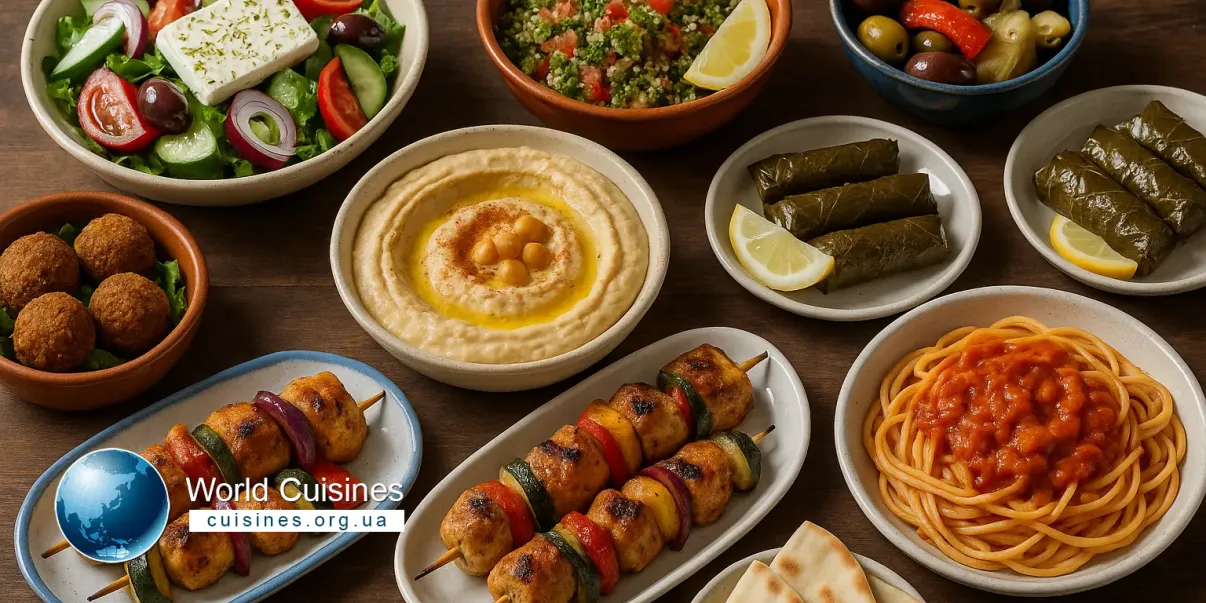
Signature Mediterranean meals from countries like Greece, Italy, and Lebanon.
Mediterranean cuisine features an array of celebrated dishes. In Greece, souvlaki – grilled skewers of meat served with pita and tzatziki – offers a flavorful street-food staple. Spain’s paella, a saffron-infused rice dish with seafood or meat, showcases both coastal ingredients and Moorish heritage. Italy contributes caprese salad, risotto, and pasta al pomodoro, each relying on peak-season produce and minimal intervention. Moroccan tagines combine slow-cooked meats with sweet dried fruits and spices, while Lebanese mezze spreads present small plates like hummus, baba ghanoush, and tabbouleh. French ratatouille is a rustic celebration of vegetables, simmered gently in olive oil. Each dish reflects its own local roots while contributing to the broader Mediterranean identity.
Traditional Recipes
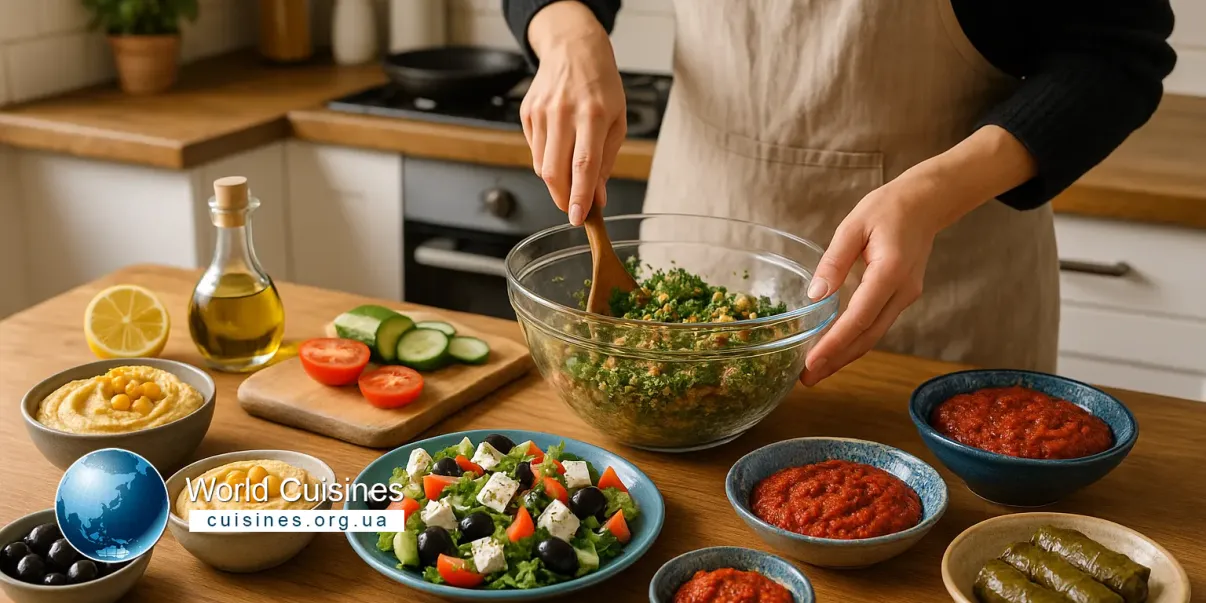
Home-style preparation of Mediterranean dishes using time-honored techniques.
Traditional Mediterranean cooking is passed down through families and rooted in local ingredients and time-tested methods. Meals are often built around what's fresh and in season – grilled vegetables, warm breads, olive oil, and hearty grains. Recipes are designed to highlight, not mask, the flavor of ingredients. In the Levant, preparing hummus or labneh is a daily practice, often paired with flatbreads baked on hot stones. In Southern Italy, nonnas still roll out pasta dough by hand and stew sauces from tomatoes grown in backyard gardens. Moroccan households slow-cook lamb with apricots or almonds in clay tagines, layering sweet and savory notes. In Spain, cooks toast rice in a wide pan before adding broth and seafood for the perfect paella crust. These recipes are not just culinary processes – they are acts of preservation and connection to cultural memory.
Typical Spices and Flavors
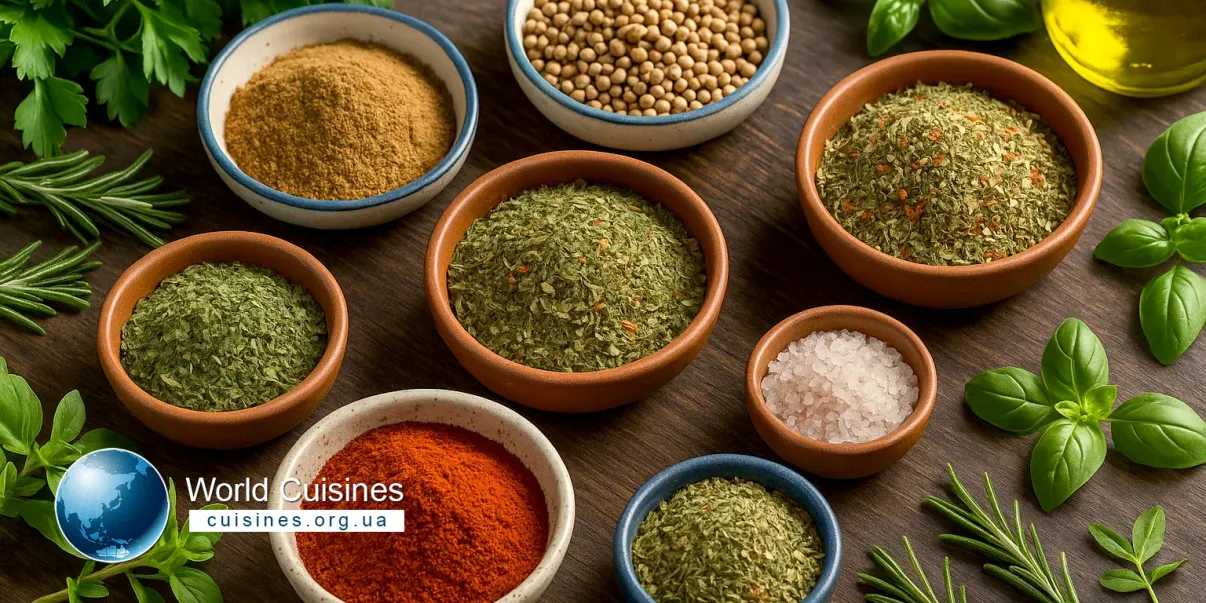
Bowls of dried herbs and spices commonly used in Mediterranean kitchens.
The Mediterranean flavor profile is herbaceous, citrusy, and occasionally smoky or spicy. Oregano, rosemary, and thyme give depth to stews and roasts, while fresh parsley, dill, and mint brighten salads and cold appetizers. Garlic and lemon are omnipresent, adding both bite and balance. North African and Middle Eastern influences introduce spices such as cumin, turmeric, cinnamon, paprika, and za'atar. Sweet-and-savory combinations are common, especially in Moroccan or Turkish dishes, where dried fruits are cooked with meat or grains. The overall palette emphasizes balance and harmony – nothing is overpowering, everything feels in tune.
Influence and Global Spread
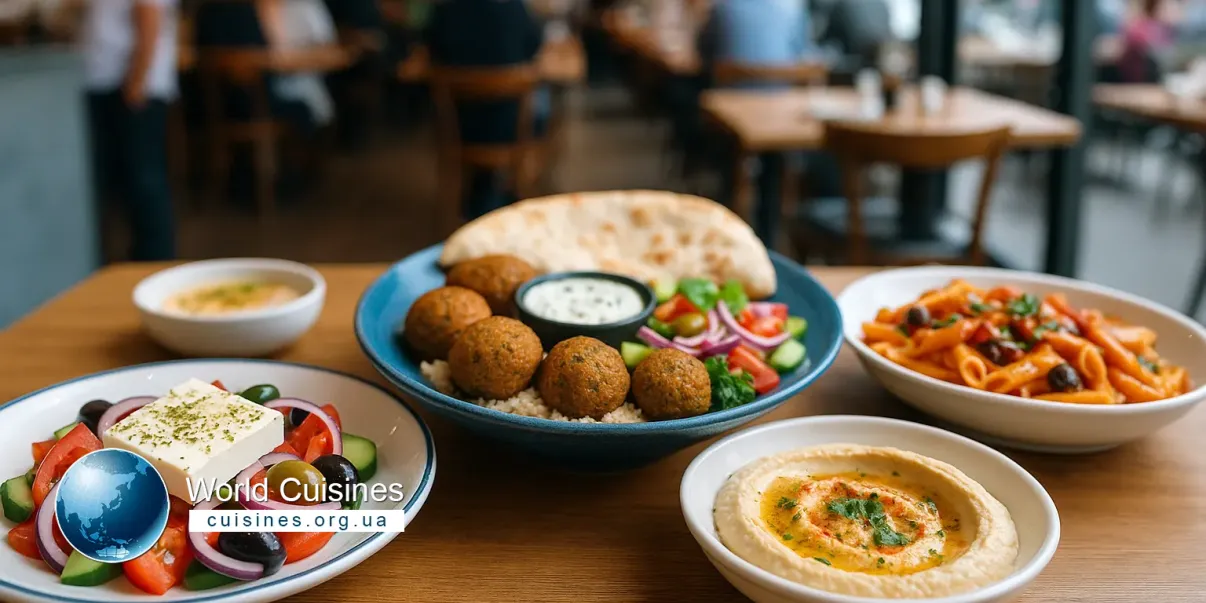
Mediterranean cuisine as a global favorite, featured in restaurants around the world.
Thanks to its healthful profile and universal appeal, Mediterranean cuisine has gained worldwide popularity. The Mediterranean diet is often cited by nutritionists for its benefits to heart health and longevity. At the same time, Mediterranean restaurants have flourished globally, offering mezze platters, fresh salads, grilled fish, and simple vegetable dishes. Beyond popularity, the cuisine has left a deep mark on international food culture. Concepts like tapas, antipasti, or shared plates owe much to Mediterranean dining traditions. In modern kitchens, the emphasis on fresh produce, olive oil, and mindful preparation continues to inspire chefs and home cooks alike.